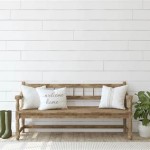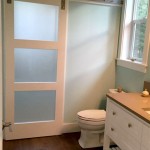How to Know Your Interior Design Style
Navigating the vast and ever-evolving world of interior design can be overwhelming, especially when trying to define your personal style. Knowing your style preferences allows you to make informed decisions about furniture, colors, textures, and overall design elements, making the process more enjoyable and the outcome more satisfying. Discovering your interior design style is not about conforming to a specific label but rather understanding what resonates with your aesthetic sensibilities and how to translate those preferences into a cohesive and inviting space.
Start with a Personal Inventory
Before embarking on the journey of defining your style, take some time to understand your preferences and what truly inspires you. Start by examining your existing home décor, clothing style, and hobbies. Consider these questions:
- What colors do you gravitate towards?
- Do you prefer sleek, modern lines or intricate, traditional details?
- What textures do you find most appealing?
- What kind of atmosphere do you want to create in your home?
- Do you prefer a minimalist or a maximalist approach?
Analyzing your existing belongings and personal interests offers a glimpse into your aesthetic preferences. This self-awareness is a crucial foundation for developing a cohesive and authentic design style.
Explore and Experiment with Different Styles
Once you have a better understanding of your personal preferences, it's time to expand your horizons and explore the vast world of interior design styles. Numerous styles exist, each with its own unique characteristics and inspiring elements.
Browse through design magazines, websites, and social media platforms like Pinterest and Instagram. Curate a collection of images that resonate with you, capturing elements that you find appealing.
Consider these popular design styles, paying attention to your attraction to each:
-
Modern:
clean lines, minimalist furniture, neutral colors -
Contemporary:
modern with a focus on contemporary trends, bold colors, and statement pieces -
Mid-century Modern:
inspired by post-World War II design, organic shapes, and simple forms -
Industrial:
exposed brick, metal accents, and reclaimed materials -
Bohemian:
eclectic mix of textures, patterns, and global influences -
Scandinavian:
minimalism, functionality, and natural materials -
Coastal:
light colors, natural textures, and nautical elements -
Farmhouse:
rustic charm, natural elements, and vintage touches -
Traditional:
classic furniture, ornate details, and rich colors
Refine and Personalize Your Style
It's unlikely that any single style will perfectly encapsulate your preferences. Instead of following a specific style to the letter, embrace a hybrid approach that combines elements from different styles to create a truly personal and unique expression.
Once you have identified the styles that appeal to you, start blending elements from each, incorporating your favorite colors, patterns, textures, and furniture pieces. The goal is to create a space that reflects your personality and sense of style while remaining cohesive and well-balanced.
Remember, design is a journey, not a destination. As your tastes evolve and your life changes, your style will naturally shift and evolve. Embrace the process of continuous exploration and refinement and allow your personal style to flourish.

How To Choose An Interior Design Style The Beauty Revival

Dear Urbaneer How Do We Establish Our Interior Design Style

How To Figure Out What S My Design Style Worthing Court

How To Find Your Unique Personal Interior Design Style Dwell Beautiful

Find Your Interior Design Style Quiz Southern Motion

What S Your Interior Design Style

Why Is It Important To Determine Your Design Style Cristina Isabel

How To Choose An Interior Design Style The Beauty Revival

A Guide To Interior Design Styles How Find Your Unique Home Decor Style Primer

What S Your Design Style Home Interior Styles Quiz Decor
Related Posts








